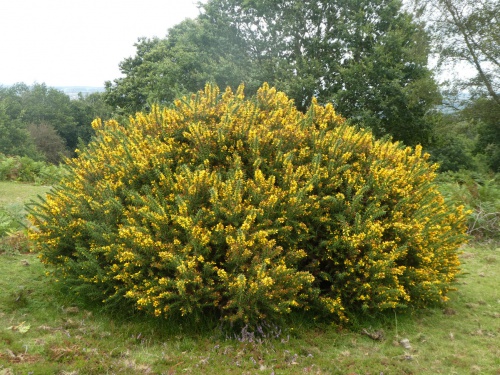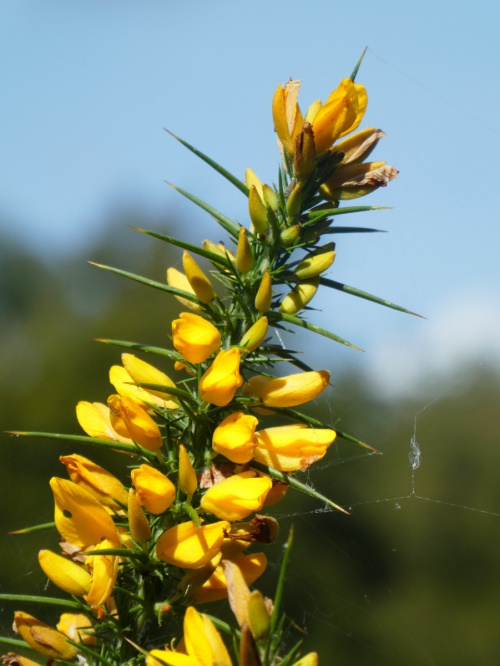Western Gorse - Ulex gallii
Whilst it is very similar to Common Gorse (Ulex europaeus), Ulex gallii tends to be smaller and low-growing, with narrower and weaker thorns and stems, forming compact, lighter green mounds. It also flowers later (July to September) whilst Common Gorse (Ulex europaeus) flowers mainly in spring.
The bracteoles are less than twice as wide as the pedicels, and the thorns are moderately grooved.
Ulex europaeus
Photos of flowers and stems
A shrub of heaths on infertile acidic soils, including leached soils overlying chalk and limestone; also found on sea-cliffs, in under-grazed or abandoned pastures, and on scrubby banks and waste ground.
In flower during July, August and September.
Perennial.
Very much a plant of Wales, south west England and north west England it is scarce in many other areas of Britain.
Becoming scarce in Leicestershire and Rutland where it is almost confined to the Charnwood area. In the 1979 Flora survey of Leicestershire it was found in 21 of the 617 tetrads.
Leicestershire & Rutland Map
Enter a town or village to see local records
MAP KEY:
Yellow squares = NBN records (all known data)
Coloured circles = NatureSpot records: 2025+ | 2020-2024 | pre-2020
UK Map
Species profile
- Common names
- Western Gorse
- Species group:
- Trees, Shrubs & Climbers
- Kingdom:
- Plantae
- Order:
- Fabales
- Family:
- Fabaceae
- Records on NatureSpot:
- 7
- First record:
- 21/10/2012 (Helen Ikin;Steve Woodward)
- Last record:
- 28/09/2024 (Bell, Melinda)
Total records by month
% of records within its species group
10km squares with records
The latest images and records displayed below include those awaiting verification checks so we cannot guarantee that every identification is correct. Once accepted, the record displays a green tick.
In the Latest Records section, click on the header to sort A-Z, and again to sort Z-A. Use the header boxes to filter the list.



